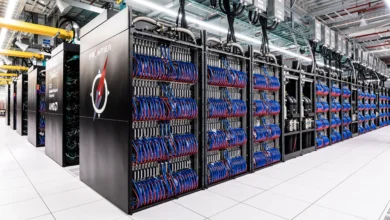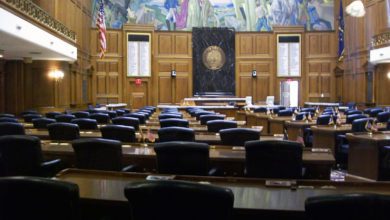
Michelle Obama vs Utah School Lunch Grinches; Indiana, Your Move
Michelle Obama vs. Utah School Lunch Grinches; Indiana- Your Move
First Lady Michelle Obama announced her plan to extend free school lunches (and breakfast) to ALL students across the country in districts for which more than 40% of the student population fall into the free or reduced category.

Photo: Courtesy of Times Union; Feb. 12, 2014
According to the findings provided by extensive economic research conducted on behalf of Data Center-Kids Count.org– as of 2013, over 49% of ALL Indiana students are eligible for free or reduced lunch.
The First Lady announced this proposed measure on the heels of an incident at an elementary school in Utah- January, 2014- in which cafeteria staff were directed to take already-served lunches away from more than 40 K-5th grade students with negative balances. These children were instead given a carton of milk and piece of fruit; this caused mass confusion and humiliation among the K-5th grade students.
Parents were infuriated and a media frenzy ensued.
And the USDA responded. Howard Berkes of NPR writes: “Secretary of Agriculture Kevin Concannon says in a letter to state school chiefs that schoolchildren should not be subjected to undue embarrassment and stigma when they have outstanding balances in their school lunch accounts.”-NPR- Feb. 6, 2014
As it turns out, the practice of withholding hot school lunches from children who have negative balances is status-quo, sans the mean-spiritedness demonstrated in Utah (an “oversight” representatives of the school insists happened due to poor timing and a “communication error”). If a student has no lunch money and/or has a significant negative balance, the general rule of thumb in many Indiana school districts is that after several attempts to collect money from a parent who has not paid for their child’s lunches, that child be given a carton of milk, a pb&j sandwich and/or a piece of fruit in place of a school lunch. (Not as a punishment, to provide food so the child will not go hungry.) This is what is done in most Indiana schools as protocol (as communicated clearly in writing and after numerous attempts to collect money from parents.) Typically, students who don’t have lunch money don’t make it all the way through the lunch-line to receive hot school lunches. Lunch-time in most elementary schools is a methodically planned event during the school day and children are separated into groups as they enter the line to avoid any confusion.
Whose responsibility is it to feed students at school?
The answer is a murky one. Though a school system and its teachers are tasked with the responsibility of producing academic success with all the trimmings (and trappings) of standardized test scores and student-performance driven job retention, where does parent responsibility/accountability for students’ learning, academic progress and seeing to their needs begin and end while their children are at school? In Indiana- the “one-size fits all” common-core standards, standardized tests and SLO’s –Student Learning Objectives are now in place to measure student “success” and to hold teachers accountable when these objectives are not reached by students, regardless of parental involvement, and regardless of what does or does not take place outside the classroom. Simply put, schools can ONLY control what takes place through what they are able to provide while students are in their care. Schools, as publicly funded institutions, are to give academic, developmental and safety needs for their students. Among developmental needs is nutrition. Students cannot function optimally when they are hungry.
Particularly at the elementary school level, school systems that make sure and invest in the nutritional needs of all children who walk through the doors of the school in turn maximize learning and offer the best possible outcome while children are in school. Though most anyone would never want a child to go hungry, counting on the kindness of school personnel to front lunch money for children who have none is perhaps crossing the line.
Here’s what we do know: Districts and teachers whose students don’t perform are at risk of losing students to other school corporations and/or their jobs, or put on “improvement plans”. Where is the parental responsibility in students’ performance? Paying for school lunches is a bare minimum parental investment. But what happens when a parent cannot or is not even doing this? The idea that “it takes a village” typically stops when it comes down to deciding who will pay for what.
Increasingly over the course of the past decade, the out-of-pocket costs for children to attend public education have increased as taxpayer dollars toward (Indiana) public education has been steadily decreasing and moving elsewhere (to private, religious and charter schools through taxpayer-funded vouchers). More pressure to perform (both teachers and students) + fewer economic resources for public education and limited community support = ambiguity. Someone has to pick up the slack, but who?
First Lady Michelle Obama Champions a New and Improved School Meal Plan Boost
In addition to addressing the alarmingly increasing American child-obesity rates by the implementation of new nutritional guidelines for school lunches and food programs throughout the country in 2010, Michelle Obama just announced a new school lunch/meal program beginning 2014-2015 school year, for districts in which at least 40% of the student population falls into the free or reduced category- that provides meals (breakfast and lunch) for the ENTIRE student population. This allows school systems to provide nutrition for each student regardless of parents’ failure to pay-taking parental inaction and subsequent student humiliation out of the equation entirely.
What does this mean for Indiana Schools?
It’s difficult to say. Upon the passage of the ACA and given the opportunity through the ACA to expand Medicaid to Hoosiers who need help getting health insurance, Gov. Pence initially refused Federal money to expand Medicaid for Hoosiers to continue the “Healthy Indiana” program already in place. Indiana Public Media reports that up to 400,000 Hoosiers fall into the Medicaid coverage gap and would be covered if Gov. Pence would have allowed the Medicaid expansion in Indiana. If Gov. Pence prevented federal ACA Medicaid expansion to eligible Hoosiers, would he also reject Federal money meant to build up a school lunch program which serves as a buffer for Indiana families who have difficulty paying for their children’s school lunches?
Ultimately, it appears Gov. Pence has the final say on whether or not Indiana schools take part in the expanded school lunch/meal program.
Nearly 1/2 of Hoosier children are eligible for free or reduced lunch, and according to the National Youth Institute- Indiana’s poverty rate is over 22%, which means that at least 1 of every 5 children in Indiana is living below the poverty line. In Muncie, poverty rates are higher. According to the Census Bureau, the poverty level in Muncie is 159.3% greater than the Indiana average and 87.8% greater than the National average. According to Mark Burkhart, CFO- for Muncie Community Schools, as of 2013, over 75% of students who attend Muncie Community Schools are eligible for free or reduced lunch.
Does Indiana need help feeding its kids at school?
Indiana: Your move.
Your representatives would love to hear from you.






